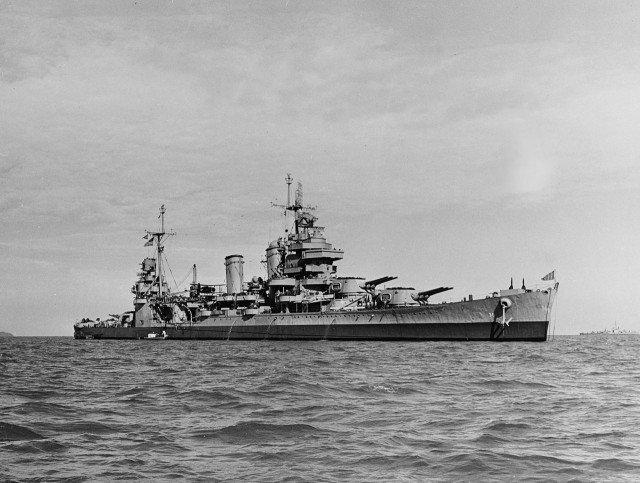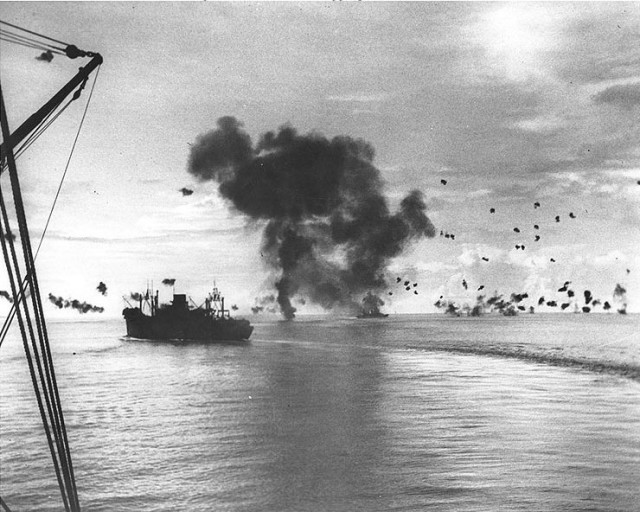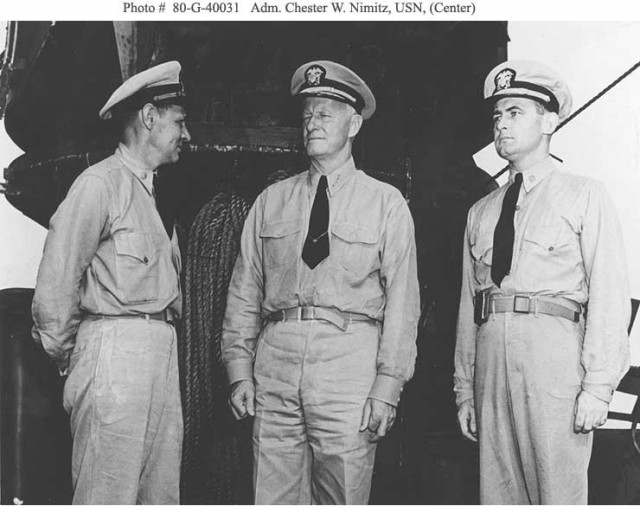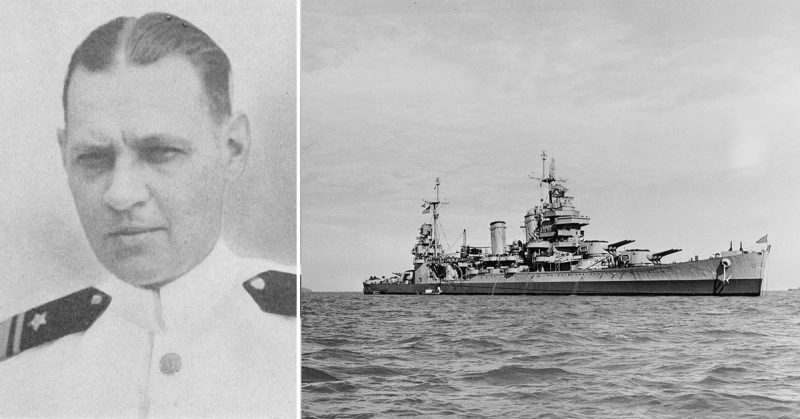It is a scenario we have seen play out in the movies time and time again. Amidst heavy combat, a naval vessel is taking on water fast as the crew scrambles around to contain the damage. Yet, for some men, Hollywood could only paint a vague shadow of what such an experience is really like. For Lieutenant Commander Herbert Schonland, this would be his reality off the coast of Guadalcanal in 1942.
During an intense nighttime naval battle with the Imperial Japanese Navy, Lieutenant Commander Schonland would find himself in command of the USS San Francisco after an Admiral, the Captain, and every other senior officer had been killed. In the pitch black of night with nothing but a hand lantern for illumination, he waded through waist-deep water and saved the ship.
For his actions, he would receive the Medal of Honor and the gratitude of every sailor on that ship who didn’t feel like going for a swim that night.
Fit for Duty at Sea
Born in 1900 Portland Maine, Herbert’s Schonland seemed destined for a life at sea. Appointed to attend the US Naval Academy at Annapolis, he graduated in 1925 as an ensign and reported to the USS Utah for sea duty.
During the years prior to World War II, he would serve on a variety of ships as was common for an up-and-coming officer. However, in June 1939 he would be assigned to the heavy cruiser USS San Francisco where he would remain until 1944.
The men of the USS San Francisco can count their blessings that such a skilled and able battle control officer was gifted to them. Otherwise, the San Francisco would find herself today making a beautiful coral reef for tropical fish off the coast of Guadalcanal.

The USS San Francisco would play a pivotal role early on in the war. As fate would have it, the San Francisco was in Pearl Harbor on December 7, 1941 awaiting maintenance and upgrades. With much of the ship broken down for an overhaul, her ammunition was in storage and many of the guns had been removed.
When the Japanese began the attack, only small arms and two .30 in (7.6mm) machine guns were available. With most of the officers and enlisted men absent from the ship, those who remained behind did their best to fight back with what they could and some crossed over onto other ships to help man their weapon systems.
It remains to be seen whether or not the San Francisco’s disheveled state played a role, but the San Francisco would escape the attack on Pearl Harbor without being bombed or damaged. As a result, with a quick workup and turnaround, she set out to sea in mid-December where she would play a vital role as one of the few unscathed ships of the Pacific Fleet.
Aboard, Lieutenant Commander Schonland would serve as the damage control officer and a late 1942 rendezvous with the Japanese off Guadalcanal would push his abilities to the limit.
Naval Battle of Guadalcanal
In August 1942, the US landed on Guadalcanal to seize a Japanese airfield under construction with the potential to threaten Australia. Later renamed Henderson Field, the Japanese would make multiple attempts to reclaim the airfield which required the presence of additional troops who were to be ferried in by sea.
As a result, a game of cat and mouse occurred around these islands as the Japanese and Americans attempted to locate and discern the other’s fleet movements.

On the afternoon of November 12, 1942, a Japanese air group attacked the task force of which the USS San Francisco was a part. During this aerial attack, a damaged torpedo bomber crash into the San Francisco killing 15 men and wounding 30. After evacuating the wounded and deceased, the San Francisco joined the hunt for the Japanese fleet.
Sometime after midnight on the morning of November 13, one of the key early naval engagements of World War II would take place. When the time for action came, the San Francisco opened fire in the pitch dark night upon an enemy cruiser and destroyer. Fully engaged with the enemy, the San Francisco would soon find herself in the sights of a Japanese battleship, destroyer, and cruiser making her the unwelcome recipient of a trifecta of naval fire.
The San Francisco continued to fight back as the Japanese ships pounded her deck, but the heavy fire took out many of her guns and a direct hit on the navigation bridge killed or severely wounded all of the senior officers to include Admiral Callahan and the ship’s Captain Cassin Young.
Meanwhile below deck, Lieutenant Commander Schonland was working feverishly to contain the damage from the 40 plus hits they had taken just above the waterline. The USS San Francisco was taking on water fast and the situation looked grim were it not for Schonland’s ingenuity.
Saving the Ship Just in Time
After being informed he was the senior officer left alive, Schonland opted to remain below deck to save the ailing ship while leaving the capable Lieutenant Commander Bruce McCandless in charge to navigate.
It wasn’t that tough a call for Schonland to turn down the opportunity to command the ship as once the ship falls below the surface of the sea there is very little left to command. Sloshing through waist deep water in the pitch black, he fought to contain the damage and pump out the water.
Realizing that the second deck’s pumps were an inadequate, Schonland made the genius call to send the water down to the lower decks where the much higher capacity bilge pumps could get the job done. Instructing the engine room to have the bilge pumps going at full capacity and giving the crew below a heads up that wall of water was about to come their way, he opened the hatches to the lower decks.
Not only did this plan work, but sending the water to the bottom decks actually help lower the center of gravity giving the ship greater stability during the effort to save it.

Early that morning, the USS San Francisco was able to turn what seemed like an imminent sinking into an ability to head out for repairs under her own power. For his actions, Lieutenant Commander Schonland would be awarded the Medal of Honor and become the poster child for the type of man you wanted on board when your ship was going down.
He continued to serve at sea until 1944 when he was sent to the Naval training school in San Francisco California to become an instructor for his beloved damage control.
It was here that he would finish out the war as he passed on his knowledge to the next generation of sailors as only one with a Medal of Honor could do.
